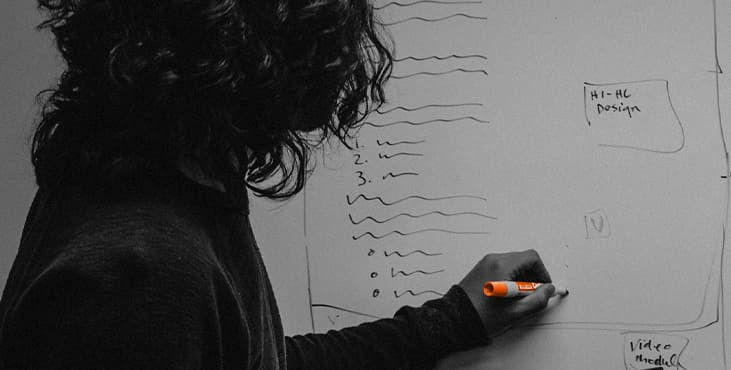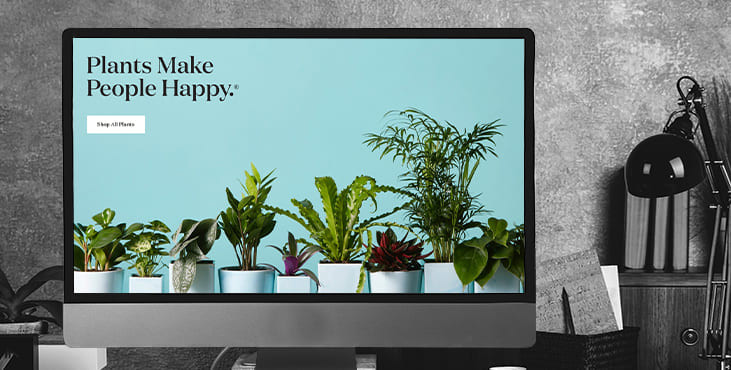
What is web design and development
The concept of web design and development has been around for about as long as websites have been around. It used to have a much simpler definition because building websites was a much simpler process.
When you compare the first website that came out in 1991 with today's websites, you can really see how much websites have changed. Today, building and maintaining a website is more complex and involves an entire ecosystem of roles and skill sets.
It can be difficult for designers to understand exactly where you fit into this ecosystem. This article outlines the main aspects of the website building process, giving a clear idea of your role, the roles of others, and the skills involved.
What is web design and development?
Web design and development is a general term that describes the process of creating a website. As the name suggests, it includes two main skill sets: web design and web development. Web design defines the look and feel of a website, while web development defines how it functions.
Because there is not always a hard line separating the two roles, the names are often used interchangeably. As the network continues to evolve, so do the roles.
In the nearly 30 years since the first website was created, there have been a plethora of job titles that describe the different skill sets used to create a website, with more and more every year. These names often overlap and their meaning varies from company to company. Enough to make your head spin.
Design vs. front-end development vs. admin development
To keep things simple, let's divide website creation into two categories: what users see and what they don’t see.
What the user sees happens in the browser and includes design and front-end development. Design defines the colors, layout, font, and images of a website everything to do with the branding and usability of a website and requires tools like Photoshop, Illustrator, Fireworks, and Sketch.
The use of programming languages such as HTML, CSS, and Javascript to implement this design is known as front-end development. These languages allow users to interact with buttons, images, text, contact forms, and navigation menus. And they are an integral part of responsive and adaptive design.
Some designers write the code and some create the interface. Some designers don't touch a piece of code. And some front-end developers stick to coding and nothing else. Useful, right?
What the user does not see happens on the server and requires internal development.
A website needs a back-end to store and organize all the data coming through the front-end. Thus, if the user buys something or fills out a form, he enters information into the application in the interface of the website. And this information is stored in a database that is located on the server.
The website works the way you want because the front and back of the site are always communicating. A back-end developer is like a conductor. They enable applications, databases, and servers to work in harmony using languages such as Ruby, PHP, .Net, and Python, as well as frameworks such as Ruby on Rails and CodeIgniter.
Web design elements
In his essay The Politics of Design, famed designer Paul Rand wrote, “Design is the activity of solving problems. It provides a means of clarifying, synthesizing, and dramatizing a word, image, product, or event."
Web designers are constantly solving problems for their users. Websites should allow users to easily navigate to where they want and do what they want. A frustrated user is less likely to stay, let alone return to the site.
Layout. Layout is the location of the website header, navigation menu, footer, content, and graphics. The layout depends on the purpose of the website and how the web designer wants the user to interact with the website. For example, a photography website will prioritize large, beautiful images, while an editorial site will prioritize text and letter spacing.

Visual hierarchy. The user should be able to access the necessary information by looking at the website. This is where visual hierarchy comes in. Visual hierarchy is the process of determining which aesthetic aspects of a website should stand out through size, color, spacing, etc.
The headings in this article are a prime example of visual hierarchy. They quickly let you, the reader, know what the article is about.
Navigation. Navigation helps the user get from point A to point B using navigation tools such as site architecture, menus, and search bars. Simple and efficient navigation helps users find the information they need quickly and easily.
Color. Color gives a website personality, makes it stand out and shows the user how to proceed. The color palette may be determined by the existing brand identity or the content of the website. A consistent color palette helps keep the site organized. When the same UI elements look different in different parts of the app/website, it can confuse your users. Maintaining a consistent design approach allows users to leverage their previous knowledge when interacting with the product.
Graphic arts. Graphics are the logos, icons and images featured on the website. They should complement the color palette, layout, and content.
Speed. The user's first impression depends on how long it takes for a website to load. If it takes too long, chances are the user won't stay. According to the 2017 Akamai State of Online Retail Performance report, the optimal page load time between devices is 1.8–2.7 seconds. The same report found that a two-second delay increased a site's bounce rate by up to 103%.
Availability. Who may or may not use the website depends on the availability of the website. By making accessibility a priority, we ensure that all users can access and use the website and its features equally.
Get a creative brand asset as a bonus
Tell us what you think
By clicking 'Submit', you agree to Privacy Policy and authorise our staff to contact you. You are liable under the Personal Data Protection Act if you key in false personal data or other people’s personal data.
offers and news
